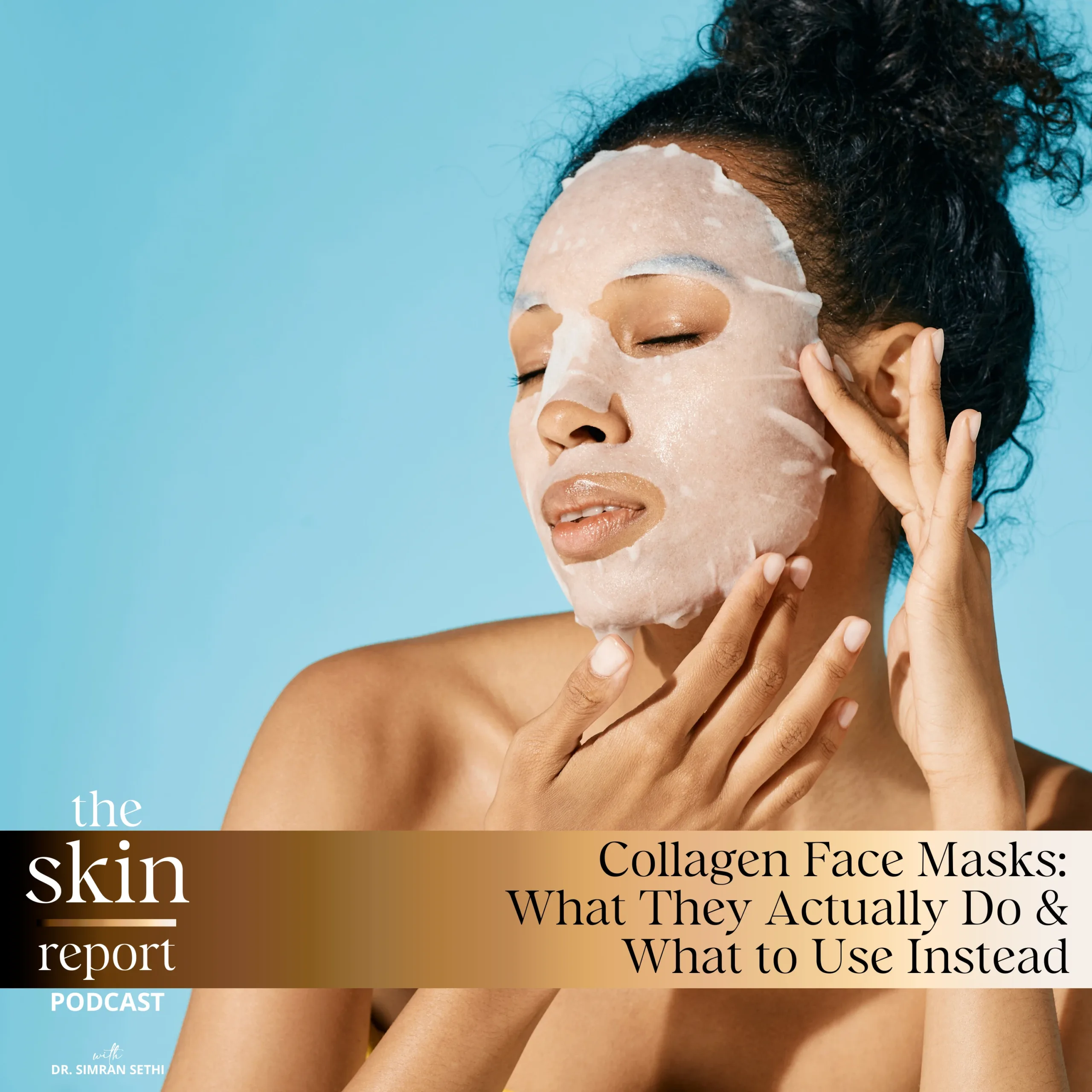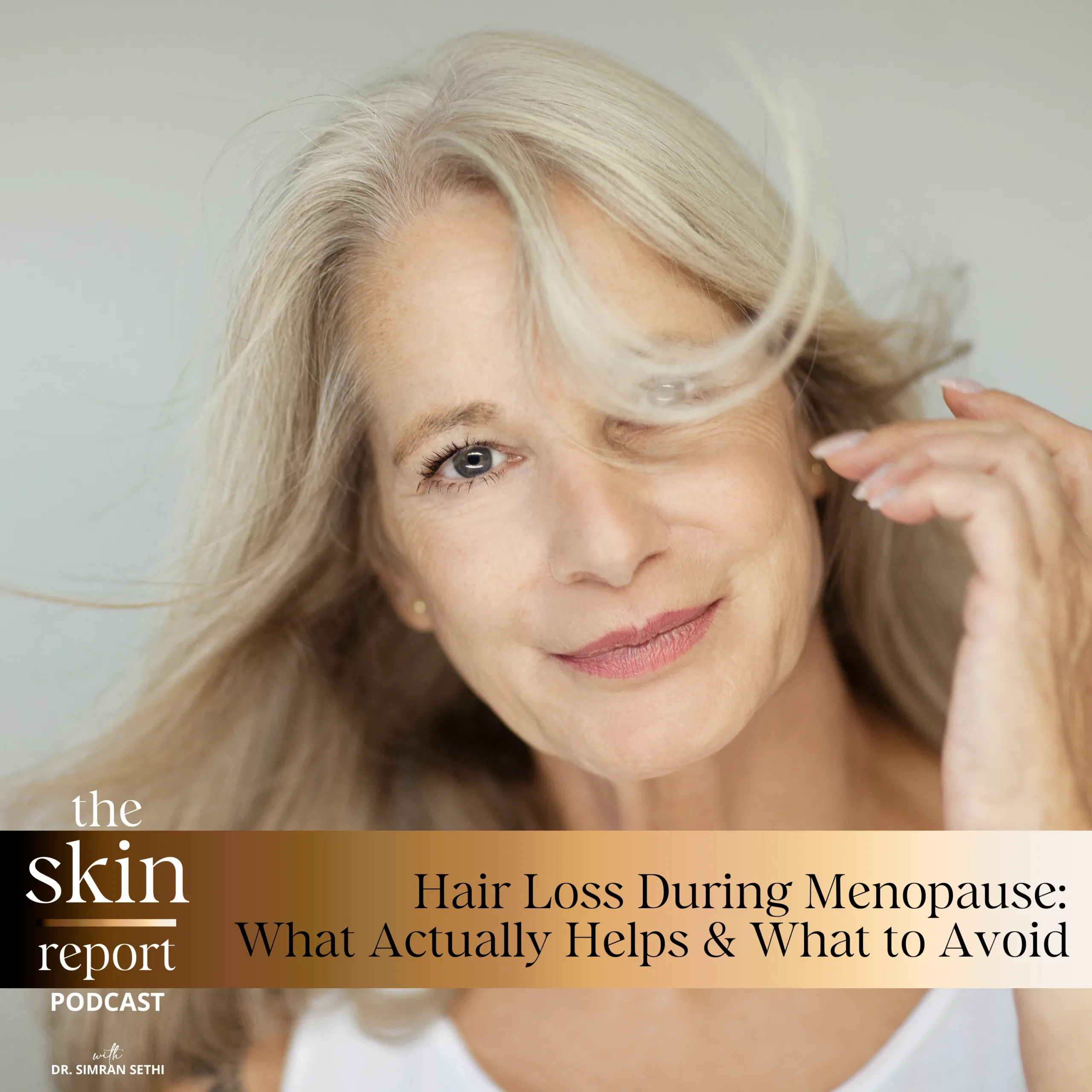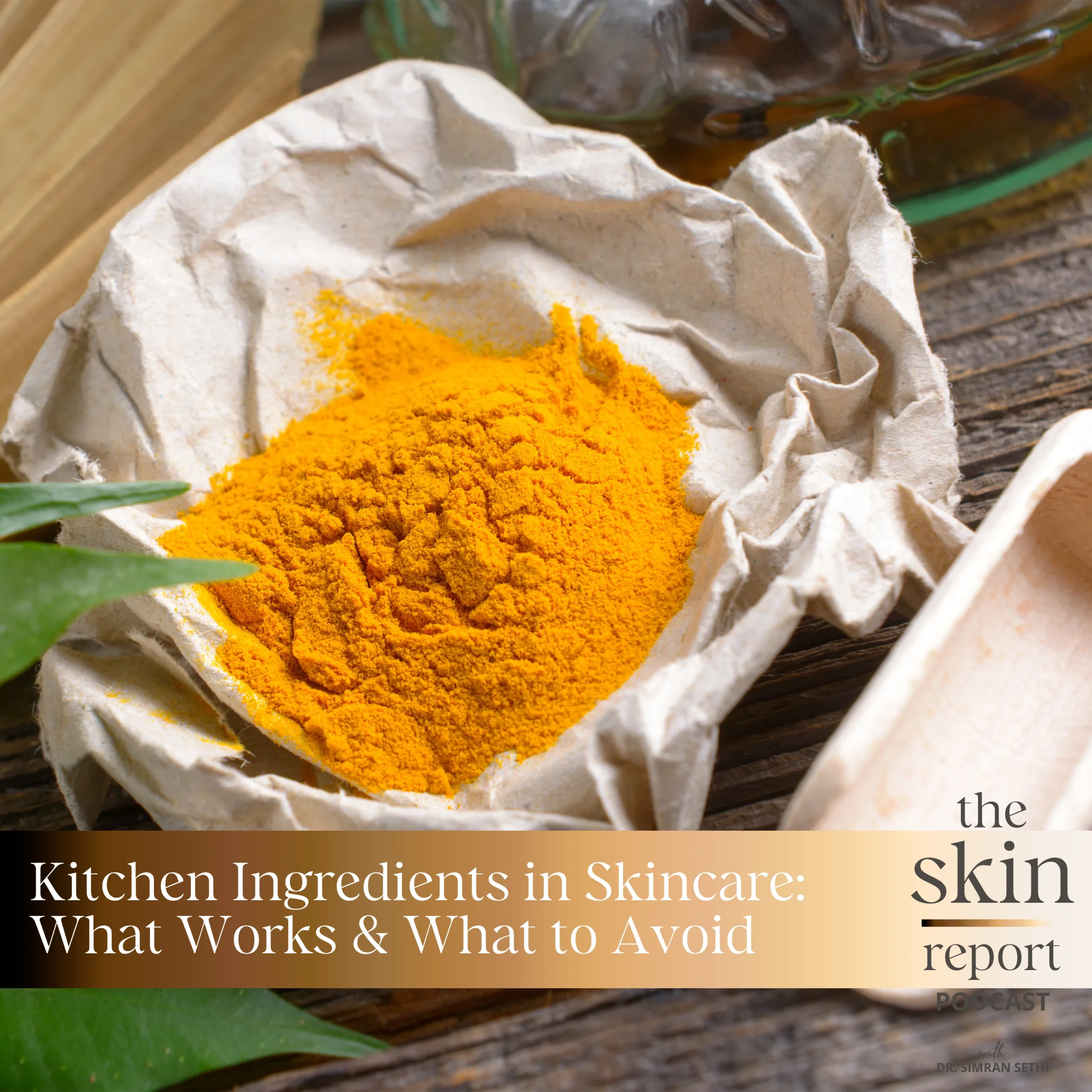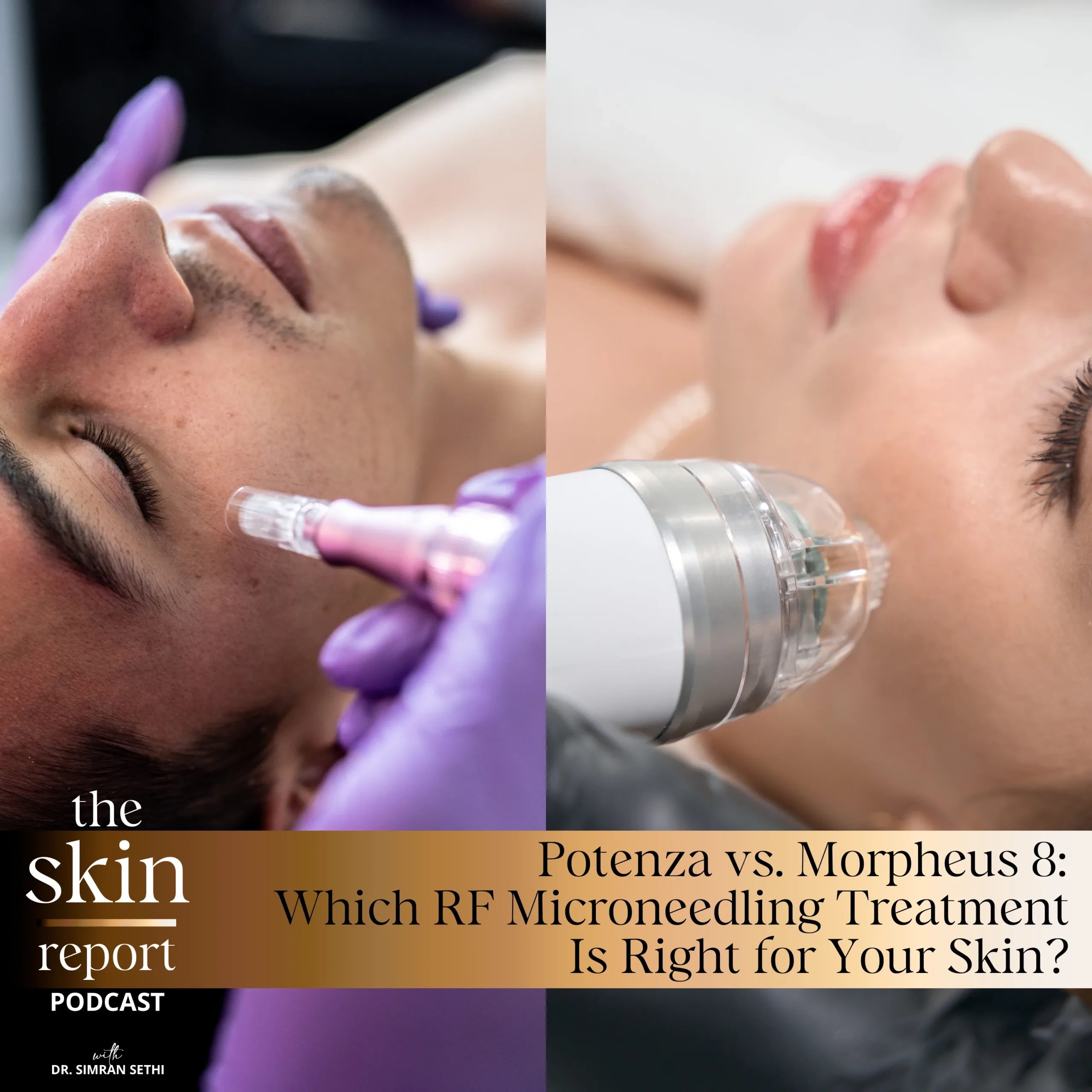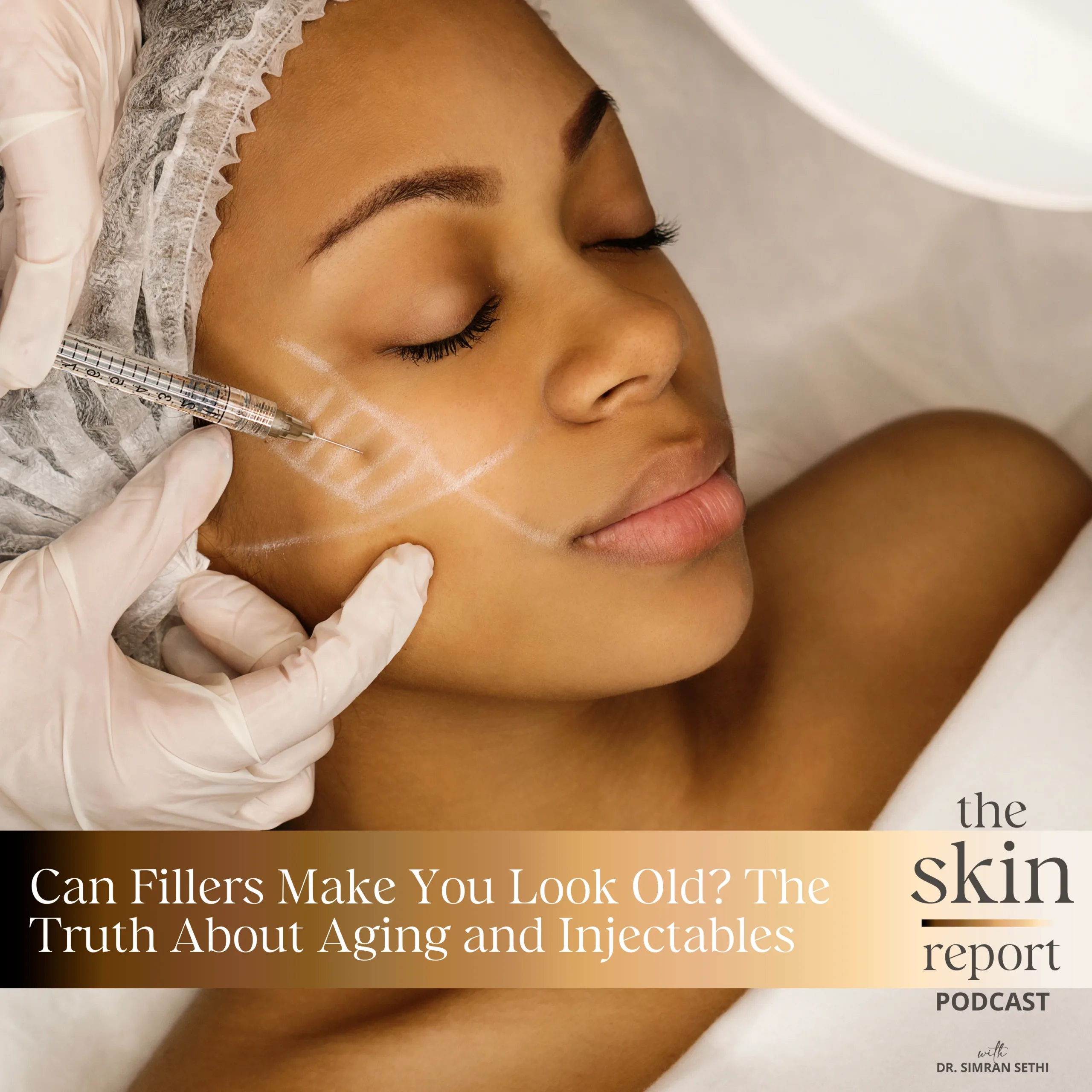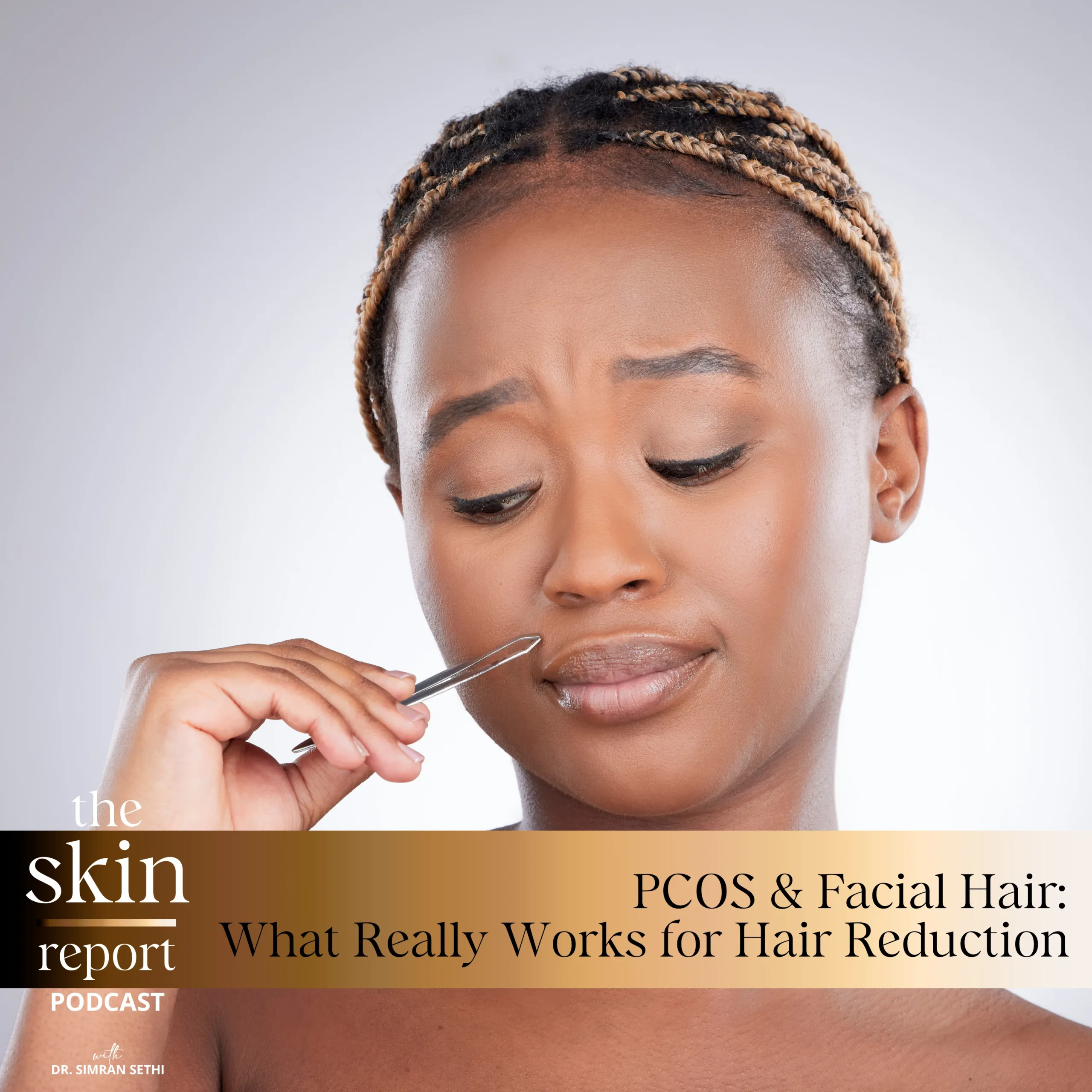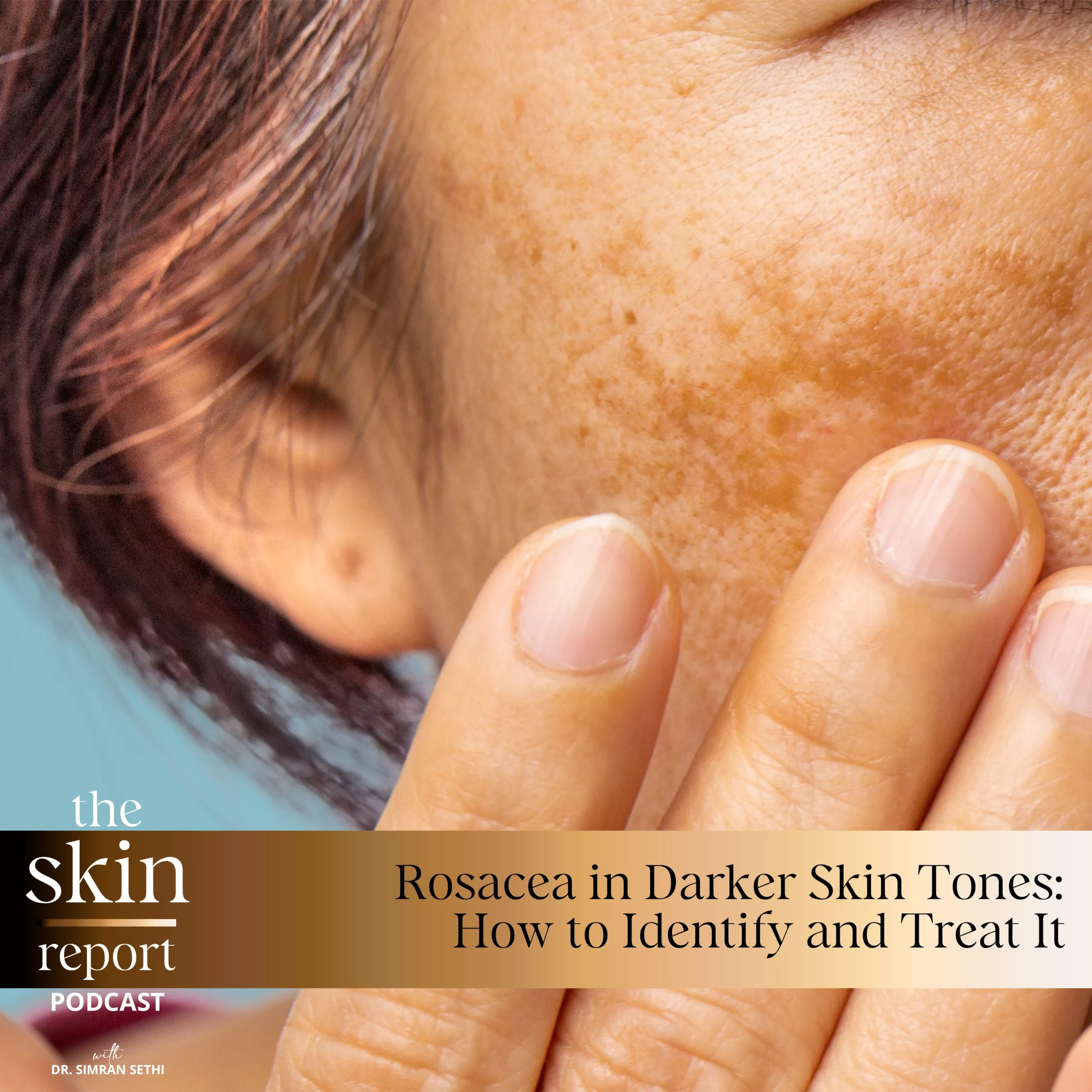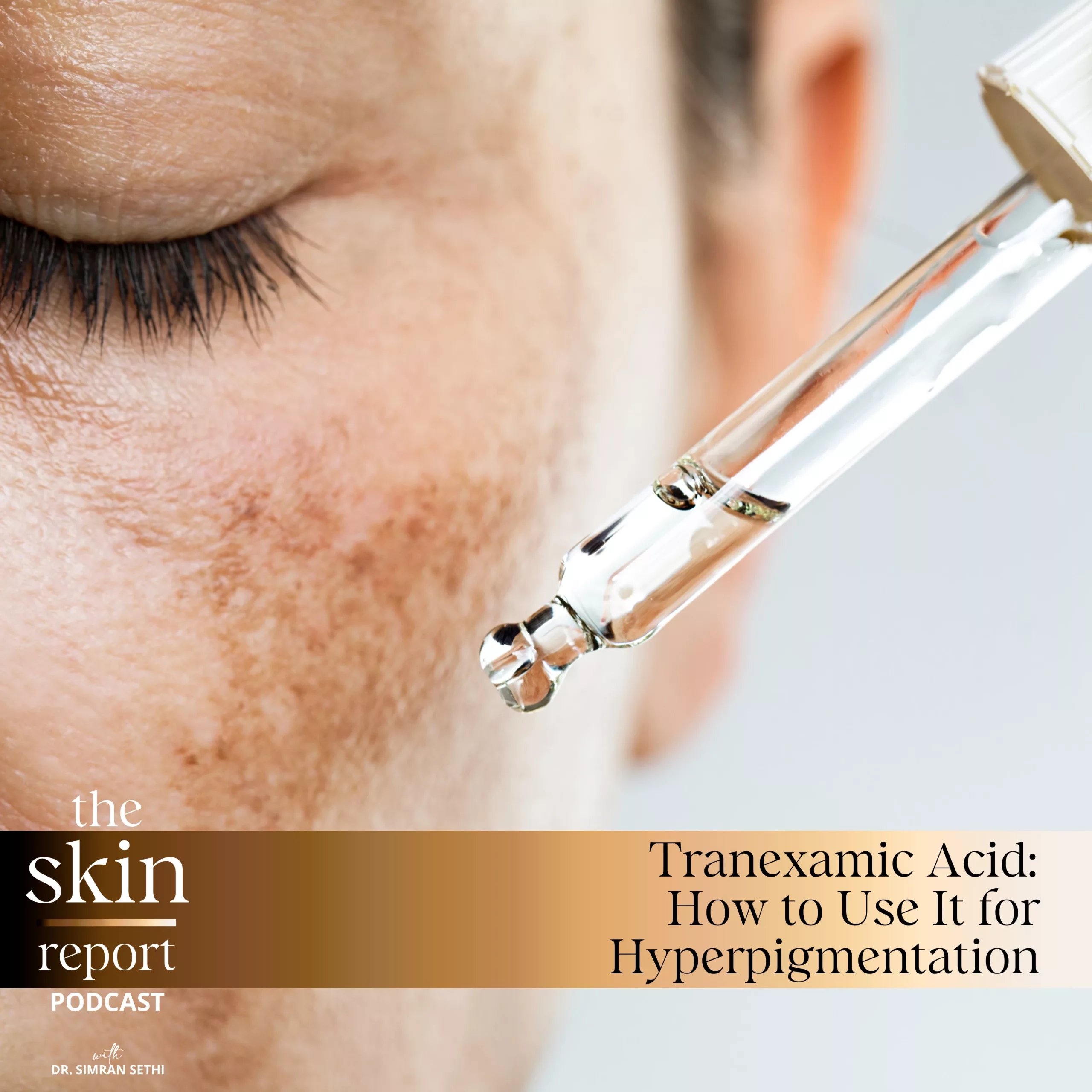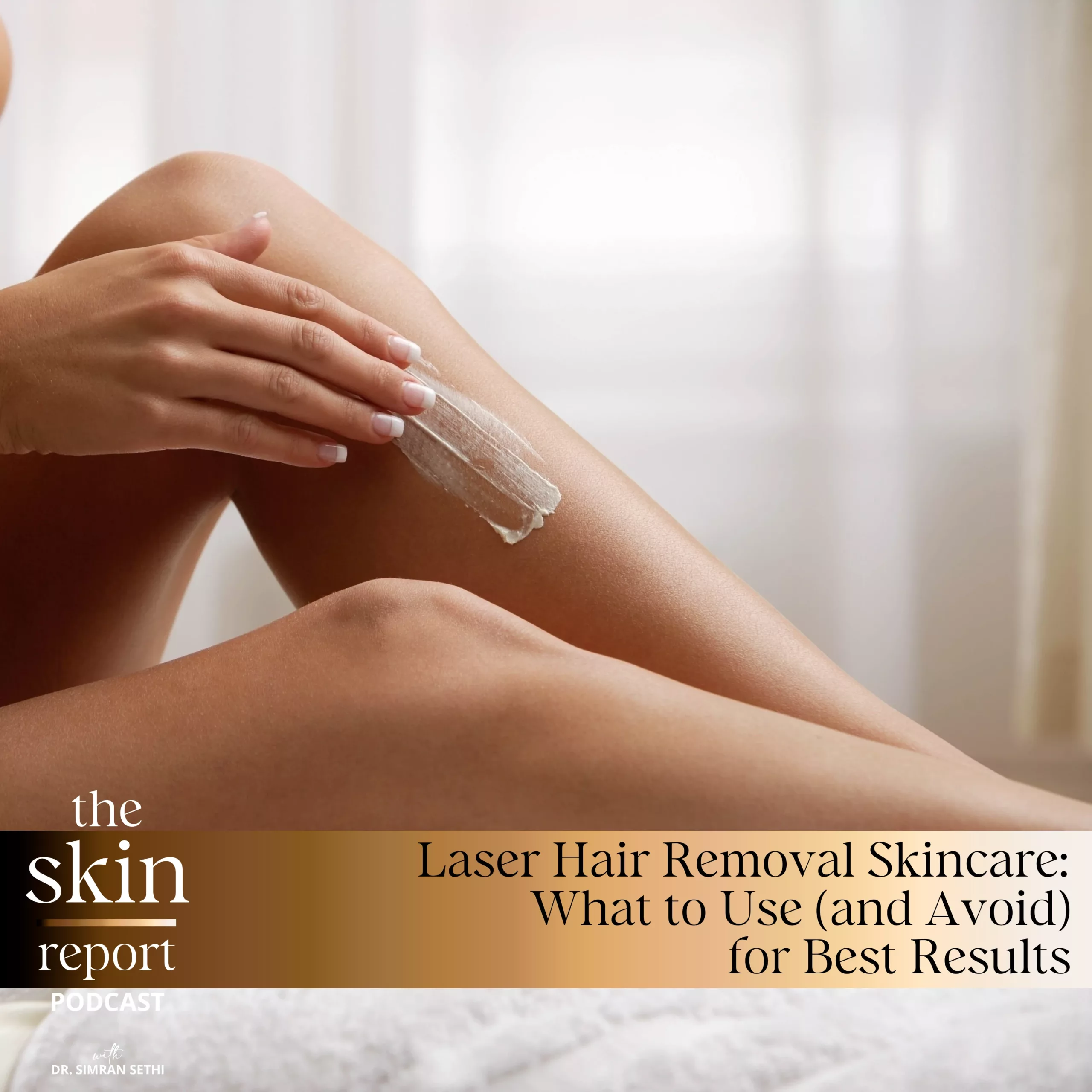Hypopigmentation vs. Hyperpigmentation:
What’s the Difference and How to Treat It
In this episode of The SKIN Report, Dr. Simran Sethi explores the key differences between hypopigmentation and hyperpigmentation—and why understanding both matters for treating your skin effectively.
While hyperpigmentation is widely discussed, hypopigmentation often leads to confusion and misinformation. Dr. Sethi explains common causes of each, including pityriasis alba, melasma, vitiligo, and post-inflammatory pigment loss. She shares actionable skincare strategies for managing white spots caused by dryness and eczema, especially in melanin-rich skin tones, and breaks down why blue light protection is a must in your daily SPF.
👉 If you’ve ever noticed white or dark spots on your skin and wondered what they mean or how to treat them, this episode gives you the science-backed clarity you need.
Exclusive Offer for the Skin Report Audience:
Use SKINREPORT20 in the shopping cart to receive 20% discount
LEARN MORE!
The Skin Report Podcast : Subscribe and Download!
Skin By Dr. Sethi – Blog
Skin By Dr. Sethi – Skincare
Skin By Dr. Sethi – Beauty Instagram
Dr. Sethi’s Medical Spa
Dr. Sethi’s Medical Spa – Instagram
Hi, I’m Dr. Sethi, and welcome to The Skin Report. Today we are going to talk about hypopigmentation versus hyperpigmentation, and that’s because there’s a lot of information on hyperpigmentation, but not as much or at least accurate information on hypopigmentation. So let’s get started.
So what is hypopigmentation and hyperpigmentation? Hypopigmentation refers to a reduction in pigmentation in certain parts of the skin, and hyperpigmentation is the opposite of that, more production of pigment or melanin in the skin. Now, the reason why we know a lot about hyperpigmentation is because there are many conditions that are caused with hyperpigmentation, sunspots, melasma, post-inflammatory hyperpigmentation, which is dark spots that are caused usually because of acne or burns on the skin. But when it comes to hypopigmentation, we don’t have as much information out there, and the little information that we have is maybe a little misunderstood.
Let’s talk about hypopigmentation. A lot of times when people are referring to hypopigmentation, they’re referring to little white spots, usually on their cheeks, which tend to be a little more visible in the summer. This is even more visible in darker skin tones because the contrast between the background color of someone with a more melanin-rich skin tone is going to show these white spots a little more. These white spots are very benign, meaning they are not part of a serious medical condition, and we refer to them in medicine as pityriasis alba. Now this condition is very common, but interestingly we don’t know a lot about it because it’s not dangerous. But basically we do know that it is more common in children. It is more common when you have excess skin dryness, like in conditions like eczema, and it is more visible in the summer, again because the background skin gets darker, which makes these white spots more apparent.
Just because these are more obvious or visible in darker skin tones doesn’t mean these don’t happen and don’t happen for the same reason in lighter skin tones, but these are more visible in darker skin tones. There’s another hypopigmentary condition called vitiligo, which is, of course, a lot more serious and extreme. In vitiligo, there are actually cells or antibodies in our body that go and destroy melanin-producing cells, causing white patches on the skin, not only on the face, but many other parts of the body. Vitiligo is a whole other medical condition that has some limited treatments, but what I’m referring to today, pityriasis alba, is just a small amount of white spots generally on your face, on the cheeks. These can be found on the arms and legs too, but most of the times people inquire about them when they’re on the face.
The last cause of hypopigmentation, which is not a disease per se but is the result of a skin insult, is hypopigmentation from things like third-degree burns or poorly healed chemical burns, poorly healed wounds. If you have a huge insult to the skin that goes all the way from the epidermis to the dermis, you can get hypopigmentation in that area. This is generally seen again with poorly healed burns and can be permanent because the melanocytes in that part of the skin have been completely destroyed, and they’re just not producing melanin to blend in with the natural color again.
Now that we’ve gone over the different causes of hypopigmentation, let’s talk about ways to reduce them. This is going to be mostly targeted at the pityriasis alba, those little white spots that appear on your cheeks and get darker in the summer. Treatments for vitiligo are a lot more complex and are not within the scope of what I’m talking about today. And also when it comes to hypopigmentation from burns, again, that’s a lot more complex and generally limited in terms of treatment. So we’re going to talk about ways to address pityriasis alba. Now, these little white spots are easily addressed with some changes in skincare. You don’t necessarily need skin treatments to address this, which is a good thing because these are also very common in young children. Pityriasis alba is caused by dryness in the skin, which usually is coming from eczema. So if you have this, you should first be focused on good hydration in the skin. Now, hydration also has to be accompanied with sealing your moisture in, which will be important in not only summer but winter months as well.
So if you have normal or oily skin, make sure you’re hydrating with a hydrating aqueous-rich or water-rich moisturizer. If you have dry skin, use a lipid-based moisturizer. After you’ve applied the moisturizer, apply something to seal your moisture in, and that generally can be accomplished with a hyaluronic-based serum. It’s important to seal your moisture in because we are constantly losing moisture to the air, and that’s also why when you apply a moisturizer, just within a few hours, you might feel like your skin is dry again. If you apply a hyaluronic acid-based serum on top of your moisturizer, you will notice that your skin is going to feel nice and hydrated throughout the day. After moisturizing, the next thing you have to be focused on in reducing these white spots is reducing sun exposure, and this can be accomplished with a chemical-free physical barrier sunscreen that gives UVA, UVB, and blue light protection. Remember, not all sunscreens–in fact, most sunscreens–do not give blue light protection. We have a lot of sunscreens on the market. They are all very good at UVA and UVB protection, but most of them don’t give blue light protection.
Blue light is abundant outside. That’s why our sky is blue, and in fact, it makes the largest part of the UV spectrum. Blue light is also abundant indoors, so if you are wearing a sunscreen that does not have blue light protection, you are actually not protected from the hyperpigmenting effects of blue light, which are even more common in darker skin tones. Making sure that you have a complete sunscreen with blue light protection and good moisturizing and good moisture sealing should, over a course of weeks to months, reduce the appearance of those white spots caused by pityriasis alba.
Last, let me cover one more thing, and that is, “Should you spot address your spots?” And this is true for both hypopigmentation and hyperpigmentation. I went through a skincare must-have routine for you if you do have white spots or hypopigmentation, but some people may think that you only apply these products on the areas where you have those white spots. That is not correct. You should be applying these products all over the face because if you have a tendency to develop white spots on one part of the face, you have that exact same tendency to develop it in other places.
And the next thing is the reason why you’re seeing more white spots in some skin tones over others is because of the contrast of the skin making those white spots appear lighter if the underlying skin is darker. In that case, it’s important to even out the skin tone, and you can really only do that if you apply your products and take care of all the skin of your face. The same concept applies in hyperpigmentation, and it is really no different in hypopigmentation.
If you still have any questions about what I’ve discussed today, hypo versus hyperpigmentation, please leave it in the comments below. And if you haven’t already done so, please subscribe. Turn on your notifications so you always know when we release new content.


